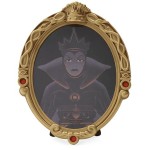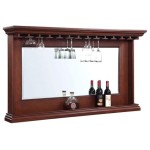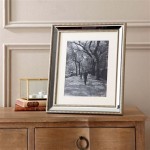Vintage Dresser With Mirror: A Timeless Addition to Any Space
A vintage dresser with a mirror is more than just a piece of furniture; it’s a statement. It’s a tangible link to the past, whispering stories of bygone eras through its craftsmanship, materials, and design. These dressers offer a unique blend of functionality and aesthetic appeal, making them a sought-after addition to bedrooms, dressing rooms, and even entryways. The pairing of a dresser with an integrated mirror creates a focal point, adding depth and character to any space while providing practical storage and grooming solutions.
The allure of vintage dressers with mirrors lies in their distinct characteristics. Unlike mass-produced modern furniture, these pieces often boast intricate details, solid construction, and the use of high-quality materials. The mirrors themselves are often aged, adding a subtle, romantic patina that modern mirrors simply cannot replicate. Understanding the various styles, materials, and considerations involved in acquiring and maintaining a vintage dresser with a mirror is crucial for those looking to incorporate this timeless piece into their homes.
Identifying and Appreciating Different Styles
Vintage dressers with mirrors encompass a wide array of styles, each reflecting the design sensibilities of its respective era. Recognizing these styles is essential for identifying a piece that aligns with individual tastes and interior design schemes. Some popular styles include:
Victorian Era (1837-1901): Victorian dressers are characterized by ornate details, elaborate carvings, and the use of dark, rich woods like mahogany and walnut. They often feature scrolled legs, decorative hardware, and large, heavily framed mirrors. The overall aesthetic is opulent and romantic, reflecting the Victorian era's emphasis on embellishment and grandeur.
Art Deco (1920s-1930s): Art Deco dressers embody sleek lines, geometric shapes, and the use of exotic materials like ebony, chrome, and inlaid veneers. Mirrors are typically rectangular or oval with stepped frames, reflecting the Art Deco movement's emphasis on streamlined modernity and luxurious materials. These dressers often evoke a sense of glamour and sophistication.
Mid-Century Modern (1940s-1960s): Mid-Century Modern dressers prioritize functionality and simplicity. Characterized by clean lines, tapered legs, and the use of natural materials like teak and walnut, these dressers often feature minimalist designs with minimal ornamentation. Mirrors are typically rectangular or square with simple wooden frames, reflecting the movement's focus on practicality and understated elegance.
French Provincial (1700s-Present, with revivals throughout): French Provincial dressers offer a more rustic and charming aesthetic. They are characterized by curved lines, cabriole legs, and a distressed or painted finish. Mirrors are often oval or arched with decorative carvings, reflecting the style's emphasis on elegance and country charm.
Identifying the style of a vintage dresser with a mirror not only aids in appreciating its historical significance but also helps in determining its potential value and suitability for a particular space. Researching different styles and familiarizing oneself with their distinguishing features is a worthwhile endeavor for any potential buyer.
Materials and Construction: Understanding Quality and Durability
The quality and durability of a vintage dresser with a mirror are largely determined by the materials used in its construction and the craftsmanship employed. Understanding these aspects is crucial for assessing the long-term value and functionality of the piece. Key materials to consider include:
Wood: The type of wood used in the dresser's construction significantly impacts its strength, durability, and aesthetic appeal. Solid hardwoods like mahogany, walnut, oak, and maple are highly valued for their strength and resistance to wear and tear. Veneer, a thin layer of wood applied over a less expensive substrate, can also be used, but the quality of the veneer and the substrate are crucial factors to consider. The presence of solid wood construction generally indicates higher quality and greater longevity.
Mirror Glass: The quality of the mirror glass itself is an important consideration. Older mirrors may exhibit signs of aging, such as silvering or cloudiness, which can add to their character but may also affect their functionality. The thickness and clarity of the glass are also indicators of quality. Beveled edges on the mirror glass can add a touch of elegance and sophistication.
Hardware: The hardware, including knobs, pulls, and hinges, can provide clues about the dresser's age and quality. Original hardware is often highly desirable, as it reflects the design aesthetics of the era in which the dresser was made. Examine the hardware for signs of wear and tear, and consider whether it is made of solid brass, iron, or other durable materials.
Joinery: The type of joinery used to construct the dresser is a critical indicator of its quality and durability. Dovetail joints, mortise and tenon joints, and tongue and groove joints are all signs of skilled craftsmanship and robust construction. These types of joinery provide superior strength and stability compared to modern methods like staples or screws.
Inspecting the materials and construction of a vintage dresser with a mirror can reveal valuable information about its overall quality and longevity. A piece made with high-quality materials and employing traditional joinery techniques is likely to withstand the test of time and retain its value.
Key Considerations Before Purchasing
Prior to acquiring a vintage dresser with a mirror, several key considerations should be addressed to ensure a satisfactory purchase. These considerations include:
Condition: Assess the overall condition of the dresser, paying attention to signs of damage, wear and tear, and previous repairs. Look for issues such as scratches, dents, chips, water stains, and loose joints. While some imperfections can add to the character of a vintage piece, significant damage may require costly repairs. Evaluate the condition of the mirror itself, looking for signs of silvering, cloudiness, or cracks. Examine the stability of the dresser, ensuring that it is level and does not wobble. Consider whether the existing finish is original or has been refinished, and assess the quality of the finish.
Size and Scale: Measure the intended space for the dresser to ensure that it will fit comfortably and proportionally. Consider the height, width, and depth of the dresser, taking into account any architectural features or existing furniture in the room. A dresser that is too large can overwhelm a small space, while a dresser that is too small may appear insignificant. Visualize the dresser in the space and consider how it will complement the existing décor.
Storage Capacity: Evaluate the storage capacity of the dresser to ensure that it meets your needs. Consider the number and size of the drawers, as well as their functionality. Check that the drawers slide smoothly and that the drawer bottoms are sturdy. Assess the overall layout of the drawers and consider whether they are suitable for storing clothing, accessories, or other items. Determine whether the storage capacity is adequate for your intended use.
Authenticity: While not always possible, attempt to verify the authenticity of the dresser. Look for markings, labels, or stamps that indicate the manufacturer, origin, or age of the piece. Research the maker or style of the dresser to determine its historical context and potential value. Consult with antique dealers or appraisers to obtain expert opinions on the authenticity and value of the piece.
Price: Research the market value of similar vintage dressers with mirrors to ensure that the asking price is reasonable. Consider the condition, style, materials, and authenticity of the dresser when evaluating its price. Compare prices from different sources, such as antique stores, online marketplaces, and auctions. Be prepared to negotiate the price, especially if the dresser requires repairs or restoration.
Addressing these considerations before purchasing a vintage dresser with a mirror will help ensure that you select a piece that is both aesthetically pleasing and functionally suitable for your needs.
Maintaining a vintage dresser with a mirror requires careful attention to preserve its beauty and functionality. Regular cleaning with a soft, damp cloth and avoiding harsh chemicals will help protect the finish. Protecting the dresser from direct sunlight and extreme temperatures will prevent fading and warping. Periodically tightening screws and lubricating drawer slides will ensure smooth operation. Addressing any damage or repairs promptly will prevent further deterioration and maintain the value of the piece. A vintage dresser with a mirror, when properly cared for, can become a cherished heirloom that adds character and elegance to any home for generations to come.

Vintage Dresser With Mirror Chairish

Antique Victorian Burled Wood Princess Dresser With Mirror By

On Vintage Dresser With Mirror

Before And After Antique Dresser With Mirror

Vintage 8 Drawer Dresser With Wing Mirror By Wolfcraft Www Landodreams Com

Small Antique Dresser With Mirror Midtown Furniture

1800s Antique Tallboy Dark Wood Dresser With Beveled Mirror Chairish

Sold Black Shabby Chic Distressed Antique Painted Dresser With Mirror Milk On Legs Refinished Furniture

Vintage Dresser Tiger Oak Mirrored Vanity With Rotating Mirror Re Org

Repurposed Oak Dresser With Mirror Quaint In The Attic Dabbling And Decorating








